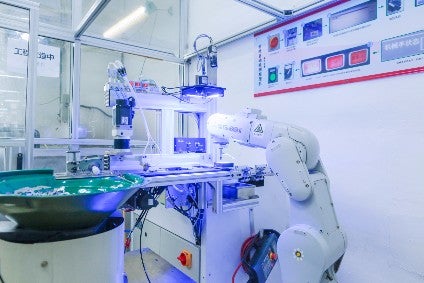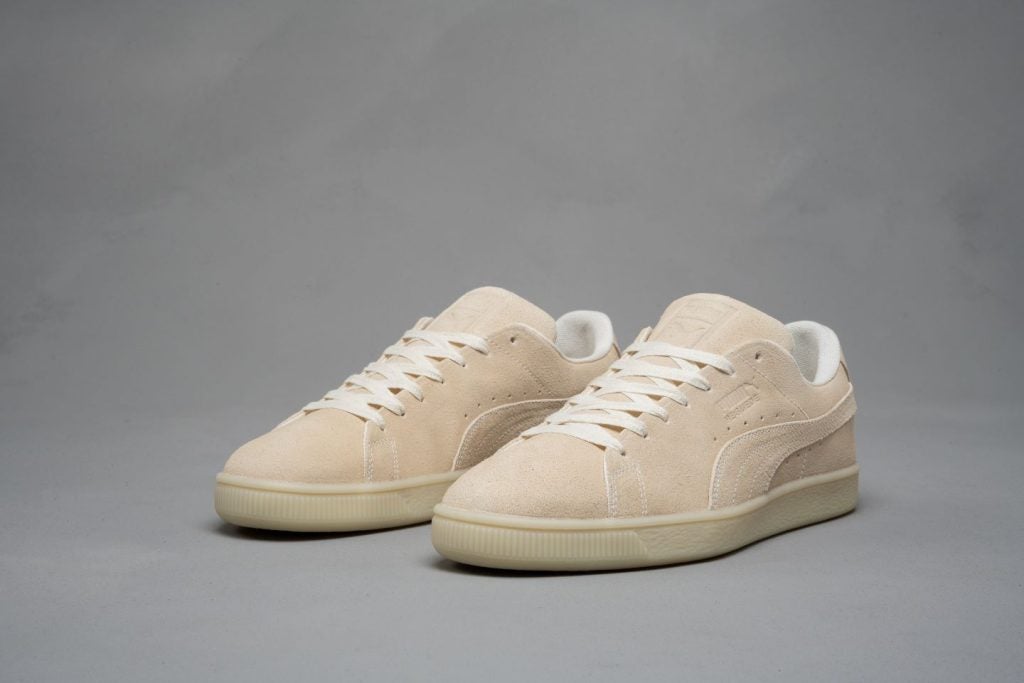
Hong Kong-based textile and apparel giant Esquel Group has made it its mission to weave sustainability into its core values, and across a vertical supply chain that spans every step from cotton farming to retail. Using fewer but more skilled workers, increasing productivity, investing in robotics and automation, micro-financing cotton farmers, and even selecting the whitest cotton fibres to reduce the bleaching process are among the initiatives outlined by managing director Edgar Tung.
“As an industry we have a bad reputation when it comes to sustainability,” says Edgar Tung, managing director of Esquel Group, the world’s largest woven shirt maker.
By way of explanation, he sets out some alarming numbers. The textile and clothing industry is the second largest polluting industry in the world after oil; it takes 5,000 gallons of water to produce a T-shirt and pair of jeans; 2.5bn tons of wastewater is generated annually by the industry in China alone; the sector accounts for 17-20% of the world’s industrial pollution; and 12.8m tons of textile waste is discarded each year.
And that’s not including the social aspect, such as low wages and poor working conditions.
Against this backdrop, the Hong Kong-based textile and apparel giant has made it its mission to weave sustainability into its core values, and across a vertical supply chain that spans every step from cotton farming, through spinning, weaving and knitting, to apparel making, accessories and packaging, retail and distribution.
See Also:
With annual sales of US$1.3bn last year, Esquel manufactures over 100 million garments annually for leading brands including Marks & Spencer, Ralph Lauren, Tommy Hilfiger and NIKE. The company also has its own retail brands PYE and Determinant.
How well do you really know your competitors?
Access the most comprehensive Company Profiles on the market, powered by GlobalData. Save hours of research. Gain competitive edge.

Thank you!
Your download email will arrive shortly
Not ready to buy yet? Download a free sample
We are confident about the unique quality of our Company Profiles. However, we want you to make the most beneficial decision for your business, so we offer a free sample that you can download by submitting the below form
By GlobalDataSpeaking at this year’s Innovation and Technology Symposium organised by the Hong Kong Research Institute of Textiles and Apparel (HKRITA), Tung explained that when dealing with sustainability it is important to look at the entire supply chain rather than just one part, as well as considering both the social and environmental impacts.
Esquel also bases its sustainability strategy on four different pillars – namely people, planet, product and community – overseen by a Sustainability Council set up five years ago.
The company is also moving the goalposts on the traditional way of thinking about issues such as labour costs
But crucially, the company is also moving the goalposts on the traditional way of thinking about issues such as labour costs. “Do we constantly move from one location to another chasing low cost labour? Or do we have other ways of looking at the bigger picture?” Tung asked.
In Esquel’s case, it is definitely the latter.
People and productivity
“When we are looking at sustainability the first thing that comes to mind is people,” Tung added – perhaps not surprisingly given that the business employs around 55,000 workers globally, 40,000 of them in its garment manufacturing sites in China, Malaysia, Mauritius, Sri Lanka and Vietnam.
But its focus is not on the cost of this labour, rather the productivity they can generate.
The numbers show why. Looking at the ex-factory unit cost of a piece of apparel (across the entire supply chain, including spinning, weaving, knitting, dyeing), labour accounts for only 25%. Other costs are raw materials (25%), processing (30%), overheads and back office (20%).
The traditional retail price is usually marked up four to eight times at the consumer level, so assuming a shirt sells at a retail price of US$140, the true cost of $25 includes manufacturing, raw materials, labour, duties and transportation, logistics. So if retailers mark-down 25% (or more) it can easily be the same as the cost of all the labour and the materials combined.
Instead, “we are actually giving mandates to our factory general managers to try to increase the salary or our workers, rather than reduce the salary.
“You might think this is counter-intuitive, because if you increase the cost you are not earning as much. But what we are trying to do is link the productivity improvement with the net take-home pay of our workers. So if you can use less time, generate higher output, we are going to give you more money.
“We are not trying to drive purely the input, we are trying to measure the output in order to create a workforce that is more sustainable.”
At its largest manufacturing site at Gaoming in China’s Guangdong province, “we are constantly increasing the net take-home pay of our workers, but at the same time we’re reducing the working hours. This is essentially improving the quality of employment; people nowadays talk about a work-life balance, they don’t want to work on a factory floor all the time.
“I think this is going to be the trend going forward: how to develop credible means of improving productivity rather than just looking at it as a cost. It’s going to be a win-win situation if your incentives are going to be linked to productivity improvement.”
Training and education
Also part of Esquel’s vision going forward is that the amount of direct labour will be significantly reduced, replaced by a group of skilled technicians with better education, better ability to interact with machines, and a better understanding of quality.
“People think workers are workers, that they sit in front of a sewing machine and generate a product. But our view is that workers will one day become technicians; they will be operating multiple machines, and they will also be responsible for quality because we’re not going to have any more QCs to check their work. They will also be responsible for calibrating the machines like a technician.”
Offering the education necessary to elevate these skills is also something Esquel has taken on board.
“We’re looking at the education level of our supervisors as a KPI that we need to constantly improve. We are also engaging with external academic institutions and trying to sponsor our workers and supervisors to go for diploma education – so the amount of our workforce who are better educated has now improved significantly.”
Another initiative to train up workers with the necessary skills to deal with the future manufacturing model has been to set up a virtual university called Esquel University. Divided into different faculties – business and management, design, humanity and social sciences, science and engineering – “to try to train people in different perspectives,” the curriculum includes online courses, experience sharing, visits and rotation programmes.
Automation and robots
Also tapping into its future vision is research and development into automation, “because now the development of technology has got to a point where it’s much cheaper to replace some of the manual work by automation and robots.”
“On our factory floor you will see a lot of robotic arms in operation; you will see drones, automatic guided vehicles, and one worker simultaneously working on a few machines, easily improving the productivity of workers by two or three times.”
Esquel has a team of around 100 people creating automated machines for its factories
Esquel has a team of around 100 people “doing nothing but creating automation machines for our different factories,” Tung revealed, tackling challenges that include how to use a robot to grab a piece of soft fabric, or aligning different stripe or check patterns.
“There is a call for computer vision. If you think about a robotic arm as your hand, you also need a pair of eyes to try to assess the fabric position. This is also a very hot area we are investing in.”
Environmental impact
When it comes to environmental impact – the ‘planet’ pillar of its strategy – Esquel claims to have invested over US$150m over the last ten years in managing its water and energy consumption, including a wastewater treatment plant that processes more than 5,000 tons of water every day.
Its efforts have also paid off with the company this month being ranked as having the second greenest textile supply chain in China, behind Levi Strauss – and the fourth greenest across all sectors. The rating from the Corporate Information Transparency Index (CITI) evaluates the environmental performance of international brands selling and sourcing in China, with the ultimate goal of guiding consumers into making green choices.
When Esquel started tracking its energy and water consumption back in 2005, there was no industrial benchmark to follow, so it set out its own reference point based on the unit consumption it takes to produce one piece of garment.
“Over the course of the past 10 years we’ve managed to reduce the energy consumption by 45% per piece of garment produced; and reduced the water consumption overall by 64%.”
Again citing its flagship location in Gaoming, Tung explained how a dearth of parking space for the 20-25,000 people working in the spinning mill, weaving, knitting and garment factory has led to the development of a Carpool app that encourages workers to share a car on their way to work or within the premises.
“One year down the road this app has been used 16,936 times and has saved over 128,000 km travelled, 12,871 litres of gas and 29.6 tons of carbon dioxide emissions. There are also companies nearby wanting to use the app, so we are opening this platform to other companies.”
Talking about apps, “we actually have factory workers writing mobile apps, and have received over 1,000 applications for different ideas.”
Product processes
As well as focusing on people and the planet, “we also think it is very important to look at the product we develop.”
Take a T-shirt: the bleaching process uses a lot of chemicals, but “since we are producing our own cotton and yarn, if we carefully select the cotton fibres that are whiter in colour we can actually reduce the bleaching process.”
One white T-shirt developed by the company and currently on sale in its stores uses 84% less water, 85% less chemicals, and 17% less energy than comparable products. The company also has a collection of plant-based natural dye products that reduce chemical usage by 60%, water by 43%, and steam by 41%, it says.
Community initiatives
Esquel directly employs around 55,000 people across the world but, adding in their family members, the company estimates between 100,000 and 200,000 people are impacted by its actions.
Among the initiatives introduced to benefit its supplier community, for instance, is a micro-financing programme for cotton farmers in the Xinjiang region of China.
“We started this about ten years ago, and since then about 1500 households have benefited from the programme. The average loan amount is CNY15,000 (US$2,254) and there have been zero defaults since its launch. The next thing we are doing with these cotton farmers is teaching them online banking, so instead of giving them cash when they sell us the cotton, we are transferring the money online.”
Future focus
Looking to the future, however, is when the company really raises the bar on sustainability. Esquel is investing more than CNY2bn (US$313.9m) on building a new spinning mill and garment manufacturing facility at picturesque Guilin in Guangxi province, which is due to begin operation next year.
“We’re developing an eco-friendly facility that demonstrates Industry 4.0 with automation and advanced use of data,” but will also be a tourist destination too, Tung explained.
“This is the model we’re trying to aim for: we’re going to use less people, we’re going to use people who are better educated, we’re going to have zero discharge, and we’re going to use a lot of automation and data to try to create value.”







